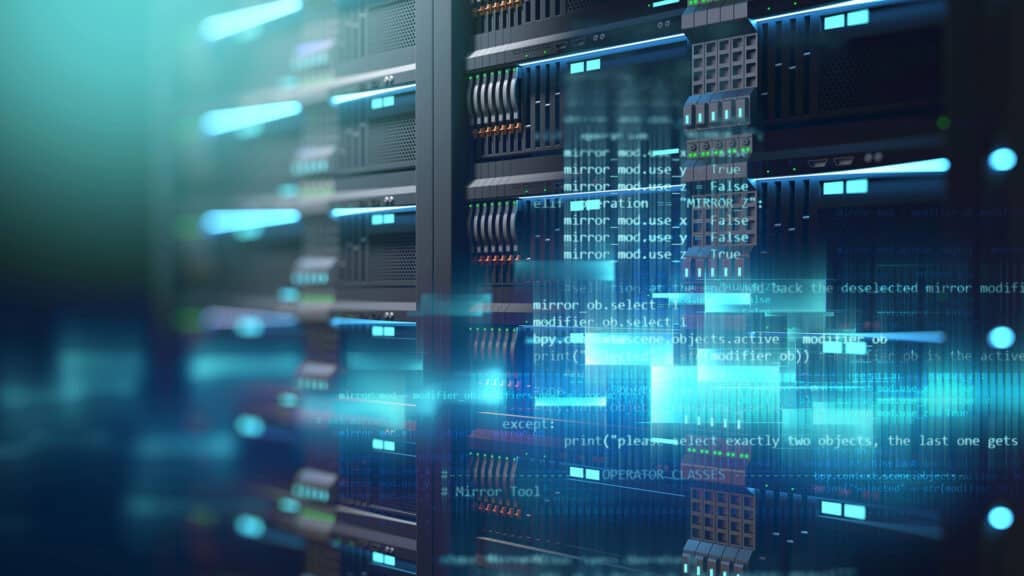The News: Dell Technologies (NYSE: DELL) announced financial results for its fiscal 2025 first quarter. Revenue was $22.2 billion, up 6% year over year (YoY). Operating income was $920 million and non-GAAP operating income was $1.5 billion, down 14% and 8% YoY, respectively. Diluted earnings per share was $1.32, and non-GAAP diluted earnings per share was $1.27, up 67% and down 3% YoY, respectively. “We again demonstrated our ability to execute and deliver strong cash flow, with AI continuing to drive new growth,” said Yvonne McGill, Chief Financial Officer, Dell Technologies. “Revenue was up 6% at $22.2 billion, servers and networking revenue was up 42%, and we generated $7.9 billion of cash flow from operations over the last 12 months.” Read the full press release here.
Dell Technologies Delivers Q1 Fiscal 2025 Financial Results
Analyst Take: The new fiscal year started strong with Q1 revenues of $22.2 billion, up 6% YoY. Dell’s Infrastructure Solutions Group (ISG) revenue landed on $9.2 billion for the quarter, up 22% YoY, with record servers and networking revenue of $5.5 billion, up an impressive 42%. Client Solutions Group (CSG) revenue was $12.0 billion for the quarter, flat YoY, with commercial client revenue at $10.2 billion, up 3%, which seems at par for the segment’s recovery this past quarter.
Dell’s “pocket-to-cloud” strategy is clearly proving its viability again, locking into the AI opportunity in the Data Center first, and trickling out to on-prem and the PC segment as the chipsets and platforms begin to enter the market. I got to spend a few days at Dell Tech World earlier this month. Dell’s hybridized AI ecosystem approach checked all of the right boxes and gives Dell a unique opportunity in the market: the ability to deliver a complete end-to-end solution portfolio to the enterprise as organizations begin to accelerate their transition to everything-AI.
Infrastructure Solutions Group (ISG) Overview
On the ISG side of the business, AI-optimized servers orders increased to $2.6 billion in the quarter, with shipments up more than 100% quarter over quarter (QoQ) to $1.7 billion. Jeff Clarke, Vice Chairman and Chief Operating Officer for Dell Technologies, noted that ISG shipped more than $3 billion worth of AI servers over the last three quarters. The group’s AI server backlog is now $3.8 billion, growing QoQ by approximately $900 million. The group’s AI optimized server pipeline specifically grew QoQ again as the number of enterprise customers buying AI solutions continues to also grow. Dell’s view aligns with ours on this: AI continues to be a significant opportunity for Dell, given that we are still in the very early stages of AI adoption.
Traditional server demand also held its own in Q1, growing for the second consecutive quarter YoY and for the fourth consecutive quarter QoQ. Storage revenue remained flat YoY, signaling that demand remains fairly stable.
Client Solutions Group Overview
On the CSG side of the business, commercial PC demand continued to show signs of a resilient recovery. The group (and the segment at large) has been enjoying a stronger demand environment. Dell expects commercial PCs to continue to improve as the year progresses, especially with the impending PC refresh supercycle, driven by a combination of factors but particularly introduction of AI-capable PCs and the end of Windows 10 support later next year.
While the use case and value proposition for AI PCs hasn’t been particularly well articulated by anyone yet, the answer to the “why AI PCs” question comes in two parts: future-proofing for AI and raw performance improvements. On the performance improvements track, what AI PCs bring to PC users is simply a better system with radically better performance benchmarks. The addition of an NPU to the CPU and GPU allows AI PCs to more efficiently manage processes and tasks, delivering faster performance and better multithreaded experiences while also being more power efficient (translating into a longer battery life). These forward leaps in performance improvements are particularly noticeable among PCs powered by Qualcomm’s new Snapdragon X Elite and X Plus SOCs, thanks to their Arm architecture. For reference, the first wave of Windows Copilot+ PCs is exclusively made up of Snapdragon X-powered PCs for a reason: Only Qualcomm’s Windows-on-Arm PC chipsets can currently deliver 40+ TOPS on the NPU, multi-day battery life, and faster processing than Apple’s M3-powered MacBook Air (as demonstrated by the Microsoft Surface team at the company’s Build event earlier this month).
What this means for technology users and ITDMs is simple: Even without injecting AI use cases into the value proposition of Copilot+ PCs, these devices’ performance characteristics are such a radical improvement over traditional and pre-Copilot+ PCs that they are worth the upgrade. Aside from the more enjoyable UX of having a faster computer with 20+ (and in some instances 30+ hours of battery life), IT departments are also looking at potentially lower TCO, lower energy costs, fewer service issues, enhanced security, and so on. And unlike previous attempts to bring Windows-on-Arm PCs to the commercial market, Snapdragon X-powered Copilot+ PCs have overcome the types of software compatibility and Microsoft support issues that hindered the category’s adoption in earlier cycles.
As for future-proofing for AI, here is where the market is today: The killer app that will make the value proposition of AI PCs crystal clear to users remains elusive but we can already see where the potential for these new PCs might start gaining traction: Look no further than AI assistants and agents. Because these PCs have powerful on-chip AI capabilities, they can inject intelligence into any task to make them easier and quicker to complete. With these PCs, tasks that might have previously taken hours or even days, like building presentation decks, organizing spreadsheets, and creating reports might take only minutes. Whether users will use their reclaimed time to be more productive or work fewer hours is up to them, but AI PCs (in partnership with Microsoft and other platform and app vendors) promise to deliver that kind of UX improvement right away, with a lot more to follow.
The idea is essentially to start future-proofing for AI now by upgrading the hardware, and wait for the long tail of AI-forward software and apps to populate the ecosystem organically. Note that Copilot+ PCs are capable of running these agents directly on the device instead of relying on an internet connection and Cloud-based agents. This opens the door to far more natural and latency-free interactions with agents and AI assistants for smoother and more effective workflows, maintains feature continuity whether the PC is connected to the internet or not, and because so much of the user’s training and inference data can now remain on the PC, Copilot+ PCs provide obvious data security advantages over traditional PCs.
Another important footnote that Dell is looking to leverage is that because Microsoft is scheduled to end support for Windows 10 in October of 2025, IT departments are already starting to focus on that generation of traditional PCs’ next upgrade cycle.
With Copilot+ PCs becoming available this summer (and Intel presumably shipping its next-gen AI PC chipsets next year), the transition to Copilot+ AI PCs should begin in earnest in H2 of this year and accelerate into 2025, which should provide significant uplift to both Dell’s CSG business and its end-to-end pocket-to-Cloud AI strategy.
The implications for the PC segment’s recovery should be fairly clear: the market has been holding its breath and waiting for this new generation of PCs to hit the market before making any major upgrade decisions. This wait-and-see strategy likely loaded the brakes on the segment’s recovery in H1, but as ITDMs and their buyers begin to pilot and validate the platform soon, we should see PC shipments start to accelerate up in the fall and more than make up for the last two quarters of slower-than-expected rebound. Nevertheless, while CSG revenue was roughly flat YoY, it managed to deliver healthy operating profitability.
Broadly, the transition to AI PCs should reset the refresh cycle for the PC segment, and potentially impact PC refresh rates moving forward as well. Again, Dell is extremely well positioned to take advantage of this piece of its broader AI ecosystem play, which is already proving successful in the infrastructure segment. Dell’s focus on how all the pieces fit should also help drive a strong attach motion.
Bringing It All together: Dell’s Pocket-to-Cloud AI Ecosystem Play
Focusing on AI as an ecosystem play, Dell understands that with 83% of all data living on-prem and 50% of data being generated at the edge, AI PCs have the potential to play a crucial part in a balanced IT ecosystem. Case in point: From both efficiency and cost optimization standpoints, AI inferencing on-prem can be 75% more cost effective than it is in the cloud. Dell’s holistic, hybridized approach, which brings AI to the data rather than making the data come to the AI seems dead-on-target.
Other Points of Note as We Start to Look Toward the Rest of the Fiscal Year
Dell also launched its Dell AI Factory, meant to help accelerate AI innovation. It brings together all of the Dell solutions and services specifically optimized for AI workloads and combines them with an open ecosystem for partners that already includes NVIDIA, Meta, Microsoft, and Hugging Face. The goal is to accelerate the development of AI-powered solutions and services that can be designed and sized to meet the specific requirements of Dell’s ecosystem of customers. Smart move, as the best way to help AI solutions scale is to nurture, grow, and scale a robust developer ecosystem around AI.
Back to ISG, Dell introduced its new PowerEdge XE9680L, an 8-way GPU server with 12 Gen5 PCIe slots and direct-to-chip liquid cooling to improve overall power efficiency by a reported 2.5x. Its 4U form factor also allows customers to buy what may arguably be the densest rackable architecture in the industry, with up to 9 XE9680Ls and 72 high-wattage GPUs in a single rack that can support performance up to 130 kilowatts. In storage, Dell’s latest PowerStore software updates should give new and existing customers up to a 66% performance boost and native sync replication for filing blocks, also strengthening the company’s value proposition in that segment. PowerScale F910 was also added to Dell’s AI-optimized portfolio, reportedly resulting in 2x faster write performance compared to the competition. The company also expanded its networking portfolio with the new PowerSwitch Z9864, which can deliver 51 terabits per second of throughput for AI workloads.
Back to CSG, I am bullish about Dell’s lineup of next-gen Copilot+ AI PCs (the ones powered by Qualcomm’s Snapdragon X platform), and how they fit in Dell’s overall portfolio: the upcoming XPS and Latitude 7455, which will be available in June. Highlights include 45-plus TOPS, support for up to 13 billion-plus parameter models (like Llama3), directly on their PCs, and multi-day battery in a very portable form factor.
Again, Dell’s strategy of bringing AI to where the data lives makes a lot of sense, and giving customers complete, frictionless control over where they develop, train, run, and deploy AI solutions (leaning into on-prem and increasingly at the edge and on-device in addition to the cloud) is the right approach.
Disclosure: The Futurum Group is a research and advisory firm that engages or has engaged in research, analysis, and advisory services with many technology companies, including those mentioned in this article. The author does not hold any equity positions with any company mentioned in this article.
Analysis and opinions expressed herein are specific to the analyst individually and data and other information that might have been provided for validation, not those of The Futurum Group as a whole.
Other Insights from The Futurum Group:
Making Dell AI Factory Real – The Futurum Group
How Dell Supports Customers with AI – The Futurum Group
Dell Technologies Delivers Q4 and Full FY 2024 Financial Results – The Futurum Group
Author Information
Olivier Blanchard is Research Director, Intelligent Devices. He covers edge semiconductors and intelligent AI-capable devices for Futurum. In addition to having co-authored several books about digital transformation and AI with Futurum Group CEO Daniel Newman, Blanchard brings considerable experience demystifying new and emerging technologies, advising clients on how best to future-proof their organizations, and helping maximize the positive impacts of technology disruption while mitigating their potentially negative effects. Follow his extended analysis on X and LinkedIn.




